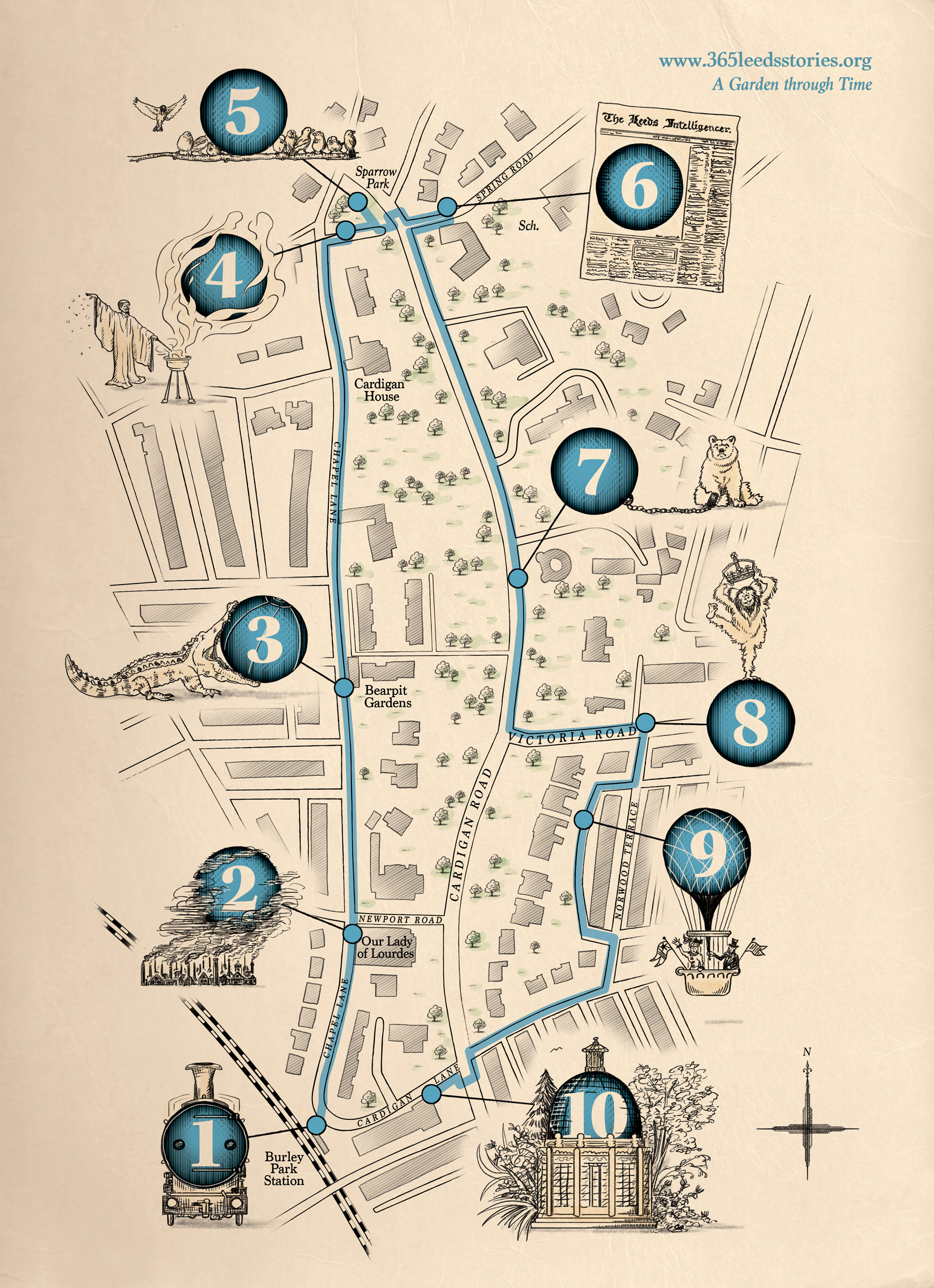
A geo-located audio walk tracing a lost landmark of Leeds. The walk follows the boundary of the Headingley Zoological and Botanical Gardens, which existed between 1840 and 1858.
The Gardens opened to the public in 1840 but were underfunded from the start and were dogged throughout their short existence by monetary troubles, and different visions of how they should operate.
Today, the Gardens are long gone but their existence has not been forgotten. There are traces of them to be found in the archives at Leeds Central Library; records of the minutes of the Gardens committee, adverts, newspaper articles concerning special events and gala days and printed letters from a variety of correspondents offering their opinions on the proper running and management of the attraction. There are also physical traces that have been left behind, such as the remains of the bear pit on Cardigan Road.
In creating this project, we have worked with people living near to the Gardens’ former site, to bring to life some of the historical texts that tell the story of this well-intentioned but ultimately ill-fated venture. We have also commissioned five local artists, to create their own responses to the Gardens and their history.
The walk begins and ends at the Chapel Lane entrance to Burley Park Station in Headingley. It takes around two hours to complete, at a leisurely pace. The walk is fairly short in terms of distance covered. There are ten stopping points along the route, telling the story of the Gardens’ creation, existence and eventual demise.
Visit our website to access the audio walk: https://www.365leedsstories.org/maps/map-19/

